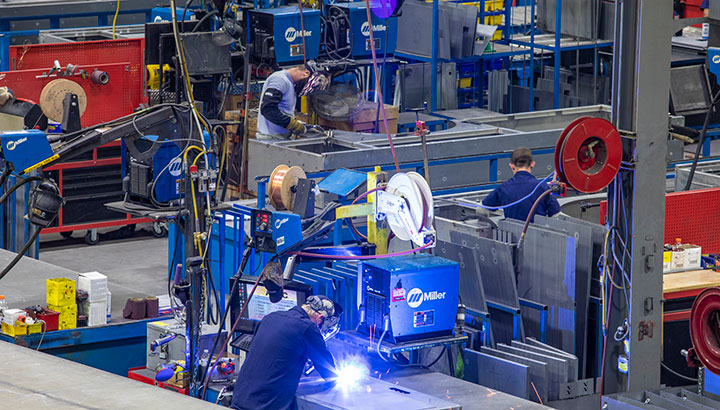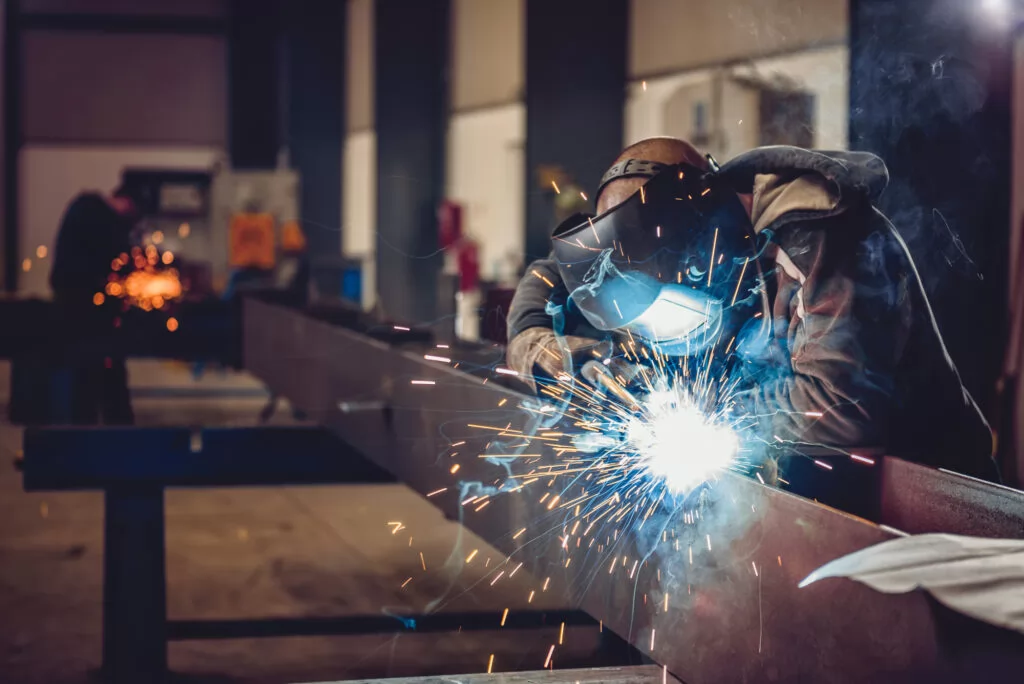Usual Welding Repair Work Issues and How to Address Them Effectively
Welding fixings often experience a variety of problems that can threaten the integrity of the end product. Usual troubles consist of inadequate infiltration, porosity, and misalignment, among others. Each problem offers one-of-a-kind challenges that require details approaches for resolution. Recognizing these problems is important for welders intending to boost their skills and outcomes. This discussion will certainly explore these common welding repair work concerns and reliable approaches to address them.
Inadequate Infiltration
Poor infiltration takes place when the weld metal falls short to fully fuse with the base product, resulting in weak joints and prospective architectural failures. This problem usually originates from insufficient warmth input, incorrect electrode angle, or improper welding speed. Welders may run into inadequate infiltration as a result of a miscalculation of the necessary specifications for a specific material density or kind. Additionally, contamination on the base product's surface area can impede reliable bonding, exacerbating the problem. To attend to inadequate infiltration, welders ought to assure ideal settings on their tools and keep a tidy work surface area. Routine assessment of welds is advised to identify any shortages early, permitting prompt corrections and the avoidance of endangered architectural integrity in bonded assemblies.
Porosity
Porosity is a common flaw in bonded joints that manifests as little gas bubbles caught within the weld steel. This problem can jeopardize the honesty of the weld, resulting in minimized toughness and potential failing under stress. Montana Mobile Welding and Repair Belgrade Fabrication. Porosity typically occurs from contamination, wetness, or improper welding techniques, which allow gases to run away right into the molten weld pool. To resolve porosity, welders must assure correct surface prep work, preserve a clean working environment, and utilize suitable welding criteria. Furthermore, selecting the appropriate filler material and protecting gas can minimize gas entrapment. Regular inspection and testing of welds can help identify porosity early, guaranteeing timely rehabilitative activities are taken, consequently protecting the high quality and reliability of the welded framework
Misalignment
Misalignment in welding can arise from different variables, consisting of incorrect configuration and thermal expansion. Comprehending the root causes is vital for effective resolution. Numerous adjustment techniques are offered to straighten components and ensure structural integrity.
Reasons for Misalignment
Welding imbalance frequently stems from a variety of underlying concerns that can compromise structural honesty. One main reason is inappropriate fit-up of parts prior to welding, which can cause voids and uneven surface areas. Variations in thermal growth during the welding procedure can additionally lead to distortion, particularly if the materials being signed up with have various coefficients of expansion. In addition, inadequate fixturing and securing may fall short to hold components firmly in position, leading to motion throughout welding. Inadequately kept devices, including welding machines and devices, might introduce variances in the weld grain, additional adding to imbalance. Operator error, stemming from not enough training or experience, can likewise play a substantial role in creating misaligned welds.

Modification Techniques Offered
Addressing misalignment properly requires a mix of corrective techniques customized to the specific issues at hand. One typical approach is the usage of fixtures or jigs to hold elements in the appropriate position during welding, guaranteeing regular alignment. In addition, pre-heating the materials can help in reducing distortion and enhance fit-up. For substantial imbalance, mechanical realignment strategies, such as using hydraulic jacks or clamps, can be utilized to remedy the placement before welding. Post-weld warm therapy may likewise be required to soothe stresses brought on by imbalance. Cautious examination and adjustment during the arrangement stage can stop misalignment issues from coming to be significant problems, promoting a smoother welding process and enhancing overall structural stability.
Distortion
Distortion is an usual obstacle in welding that can emerge from various factors, including uneven heating & cooling. Recognizing the root causes of distortion is essential for implementing efficient prevention methods. Resolving this concern not just improves structural stability however additionally enhances the total top quality of the weld.
Reasons for Distortion
When based on the extreme warmth of welding, materials typically go through adjustments that can result in distortion. This phenomenon largely emerges from thermal development and contraction throughout the welding process. As the weld area warms up, the product expands; upon air conditioning, it acquires, which can develop internal stresses. On top of that, unequal home heating across a workpiece can worsen these stresses, resulting in bending or bending. The sort of material likewise plays a substantial duty; metals with varying thermal conductivity and coefficients of expansion might respond in a different way, bring about unforeseeable distortions. In addition, bad joint style and inadequate fixturing can add to imbalance during welding, increasing the likelihood of distortion. Understanding these reasons is vital for reliable welding repair work and avoidance techniques.
Avoidance Techniques
Efficient prevention techniques for distortion throughout welding focus on regulating warmth input and ensuring appropriate joint style. Maintaining a regular heat input aids to reduce thermal expansion and contraction, which can result in distortion. Using techniques such as pre-heating the workpiece can additionally lower the temperature level gradient, promoting uniform home heating. Additionally, picking ideal joint layouts, such as T-joints or lap joints, can boost stability and lower stress and anxiety focus. Executing correct fixturing to safeguard the work surfaces in place additionally aids in keeping placement during the welding procedure. Staggered welding sequences can distribute heat click this site much more evenly, avoiding local distortion. By using these techniques, welders can substantially decrease the chance of distortion and enhance the overall top quality of their welds.
Breaking
Splitting is an usual concern come across in welding repairs, usually resulting from various factors such as improper cooling rates, product choice, or inadequate joint preparation. The event of fractures can considerably jeopardize the honesty of the weld, leading to potential failures during procedure. To resolve this problem, welders have to initially evaluate the root triggers, guaranteeing that products are compatible and suitably picked for the specific application. Furthermore, controlling the air conditioning price during the welding process is essential; fast air conditioning can induce anxiety and result in splitting. Correct joint style and preparation also add to decreasing the danger. Implementing these approaches can enhance weld top quality and sturdiness, eventually lowering the chance of cracking in completed weldments.

Insufficient Combination
A substantial problem in welding repairs is incomplete combination, which happens when the weld steel does not effectively bond with the base product or previous weld passes - Belgrade Fabrication. This issue can bring about weak points in the joint, potentially compromising the integrity of the bonded framework. Variables adding to insufficient fusion include not enough warm input, improper welding technique, and contamination of the surface areas being signed up with. To resolve this concern effectively, welders should ensure proper pre-weld cleansing and surface preparation, in addition to adjust their welding specifications to attain appropriate infiltration and blend. Regular inspection during the welding process can also aid recognize insufficient blend early, enabling prompt rehabilitative steps to enhance the general top quality of the weld
Overheating
While welding repairs can improve architectural honesty, overheating offers a significant challenge that can cause product degradation. Excessive warm during welding can change the mechanical homes of metals, causing reduced stamina, boosted brittleness, and warping. Check Out Your URL This phenomenon is especially essential in high-stress applications where architectural dependability is critical. Identifying getting too hot can entail aesthetic inspections for staining or distortion, in addition to keeping an eye on temperature level during the welding process. To minimize the threats connected with overheating, welders ought to employ suitable techniques, such as managing warmth input, changing traveling speed, and making use of ideal filler materials. In addition, applying pre- and post-weld warmth therapies can assist restore material residential or commercial properties and boost the general high quality of the repair service, making certain long-lasting performance and security.
Frequently Asked Questions
What Are the Common Indicators of a Welding Defect?

How Can I Examine My Welds for Top quality?
To check welds for high quality, one can make use of aesthetic examinations, ultrasonic screening, and radiographic methods. Each technique assures structural honesty, recognizes flaws, and verifies adherence to specified requirements, ultimately improving the reliability of the welded joints.
What Security Precautions Should I Take While Welding?
When welding, one should focus on security by putting on suitable personal safety devices, making sure appropriate ventilation, securing flammable materials away, preserving a tidy work area, and recognizing environments to avoid crashes and injuries.
Can I Fix a Weld Without Redoing the Entire Joint?
Fixing a weld without remodeling the entire joint is possible, relying on the damages (Montana Mobile Welding and Repair Belgrade Welding). Techniques such as grinding, adding filler product, or making use of a welding process can successfully attend to certain imperfections while protecting the bordering framework
What Devices Are Crucial for Efficient Welding Fixes?
Necessary devices for efficient welding repairs include a welding machine, cable brush, mill, protective gear, clamps, and filler products. Each device plays a vital i loved this duty in making sure quality and safety during the repair service procedure. Porosity commonly develops from contamination, dampness, or inappropriate welding techniques, which allow gases to leave right into the liquified weld pool. Improperly conserved devices, including welding makers and devices, may present inconsistencies in the weld grain, additional adding to misalignment. When subjected to the intense warmth of welding, materials usually go through adjustments that can lead to distortion. Fracturing is an usual problem experienced in welding repairs, typically resulting from different elements such as improper cooling rates, material option, or insufficient joint preparation. A considerable problem in welding repair services is incomplete fusion, which occurs when the weld metal does not effectively bond with the base product or previous weld passes.